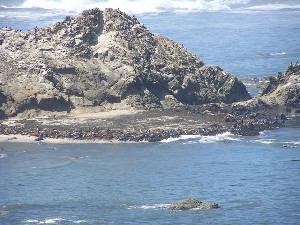Islands! Model the different ways islands form, and explore the implications for island structure. Examine the physical properties of sand, and the biology and chemistry of coral reef formation. Learn about many of the organisms that take advantage of the isolation of islands for breeding, such as elephant seals and birds. Learn about dispersal and colonization of islands, and island biogeography. Investigate cell biology and DNA, adaptation and natural selection. Study some of the animals in the waters around islands, from plankton to sharks. Apply what you learn to issues of management unique to island environments.
MARE lessons (Teacher’s Guide to Islands)
Sands of Time Island Rock
Mirounga Mirounga Build an Island
Shark Encounter Santa Clara Island
Lessons
Hot Spots & Volcanic Island Formation
Island Formation, Constructing a Coral Island*
*first publication occurred in Science Activities, Classroom Projects and Curriculum Ideas, 46(3)
Vertical Zonation: Studying Ecological Patterns in the Rocky Intertidal Zone **
**first publication occurred in Science Activities, Classroom Projects and Curriculum Ideas, 47:8-14
Seabirds & Islands Field Guide
Colonization: Island Biogeography Snowball Fight
Modeling Natural Selection: Butterflies
Cell Biology & Island Biogeography
Field Inquiry: Tidepool Islands
 This material is based upon work supported by the National Science Foundation under Grant Nos. 0338153 and 0638731. Any opinions, findings, and conclusions or recommendations expressed in this material are those of the author(s) and do not necessarily reflect the views of the National Science Foundation.
This material is based upon work supported by the National Science Foundation under Grant Nos. 0338153 and 0638731. Any opinions, findings, and conclusions or recommendations expressed in this material are those of the author(s) and do not necessarily reflect the views of the National Science Foundation.

